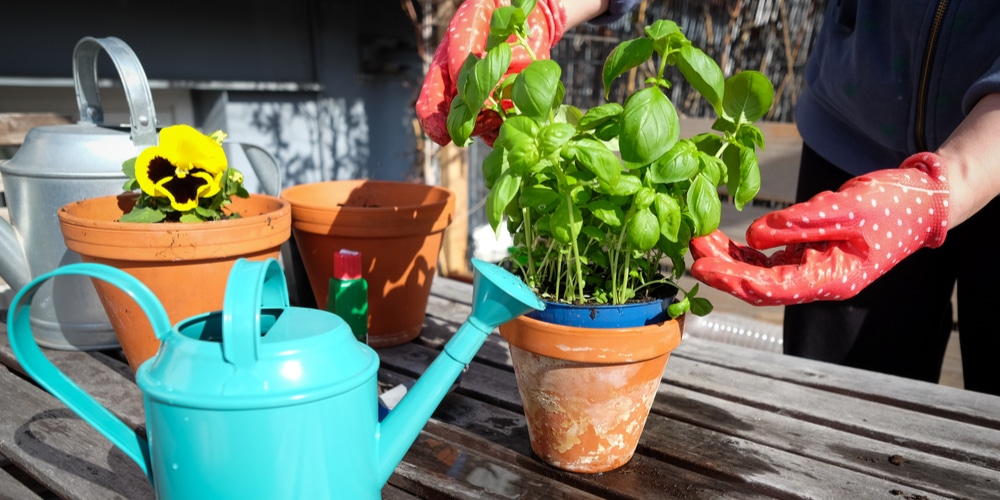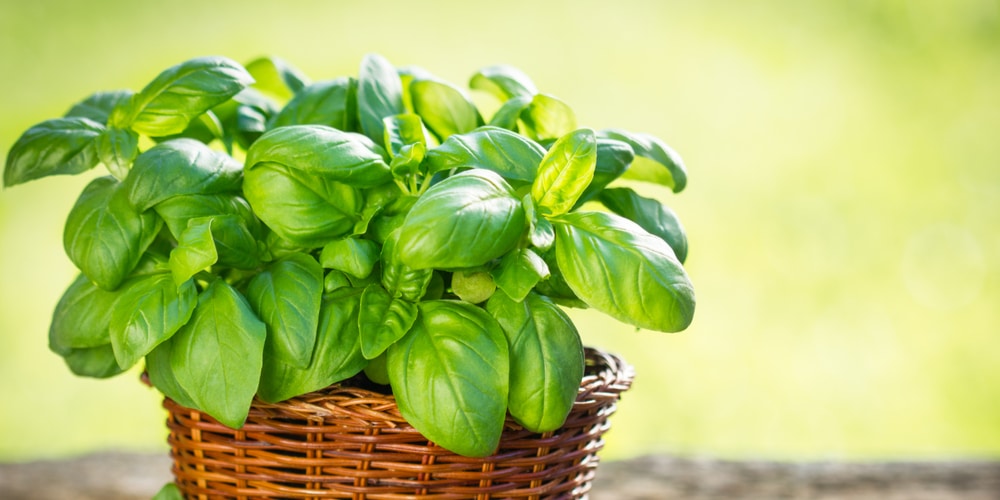If you are not sure what herb to add to your garden, consider planting basil. This plant is versatile and has several uses in the kitchen: you can use its leaves to add flavor to your dishes, garnish your pizzas or soups, as an ingredient in your salads, or make delicious homemade pesto. If you grow basil you may be wondering, ‘how often should I water my basil plant?’
Even if most people associate this herb with Mediterranean cuisine, these plants are native to Southeast Asia. It is probably because of their origins that they love the warmth and need plenty of moisture to survive.
While basil isn’t particularly challenging to grow, watering it often causes problems. Many people forget that these plants need moist soil and fail to provide them with what they need to thrive. Doing so might cause severe damage to their herbs. On the other hand, it is not uncommon for gardeners to overwater this plant, which might lead to root rot (which can eventually cause the death of your basil).
It sounds trivial, but you need to know how much water your basil needs (and how frequently you should provide it) to ensure your plant’s health. If you are unsure about it, don’t worry: we are here to help you.
In this “How Often Should I Water My Basil Plant” essential guide, you’ll learn everything you must know about providing adequate moisture to your herb. But don’t worry: it isn’t as challenging as you might imagine. Just read on and apply our tips!
All You Should Know About Watering Your Basil Plants
Contrary to other herbs that don’t like dry environments, basil will not survive without adequate moisture. This plant requires much more water than herbs such as oregano, thyme, and rosemary. And this makes sense because of its natural habitat.
Overall, there isn’t much to worry about when growing basil, but water is, for sure, something you’ll need to pay attention to.
Don’t forget to feel the soil with your fingers before adding extra moisture to your plant to avoid overwatering. If it is dry, it is time to water your herb. Otherwise, wait for a couple more days.
The ideal amount of water you should give your basil depends on where you live. If the climate is hot, your plant probably needs more water to sustain itself. Usually, giving your basil about one inch of water every three days should be enough. But keep an eye on your plant to ensure it stays happy. Don’t forget to consider rainfall. If you don’t live in a dry region, it might be enough to support your basil’s growth.
If your plant is growing indoors, don’t forget to place it in a pot with drainage holes and pay close attention to the soil conditions. You might only have to water your basil once per week under such circumstances! If this sounds complicated, don’t worry. Watering your basil will not seem challenging anymore once you get your hands on the routine.
If you notice leaves turning yellow or wilting, you are probably doing something wrong with your watering schedule. Also, don’t forget to move your basil plant to an adequate container to support its growth. Leaving it in a pot too small for it might lead to overwatering and a lack of nutrition.
If you live in a hot region, add mulch around our plants. Doing so will help retain moisture and regulate the soil temperature, which will prevent your basil from drying too fast. But beware: it might attract slugs and snails.
What Does Inadequate Watering Do to Basil Plants?
A healthy basil plant is dense and has a drooping appearance. Its leaves are bright green, release a pleasant fragrance, and point downwards in a gentle curve. The stems should be firm, and you should be able to see new growth emerging.
If your plant looks wilted, shriveled, or yellow, there is probably something wrong. And most of the time, such symptoms indicate overwatering or underwatering.
If you don’t provide your plant with adequate moisture, its leaves will look dull and pale. If the issue is severe, you might notice them becoming brittle. Increase watering to your plant to counter this issue and take your basil back to its natural conditions.
How Often Should I Water My Basil Plant?: Conclusion
On the other hand, signs of overwatering include wilting, soggy soil, yellow leaves, and dark stems. If the issue looks severe, consider transplanting your basil to a different pot with a new soil substrate (ensure it is well-draining!)
Related Article: How Long to Basil plants Live?


